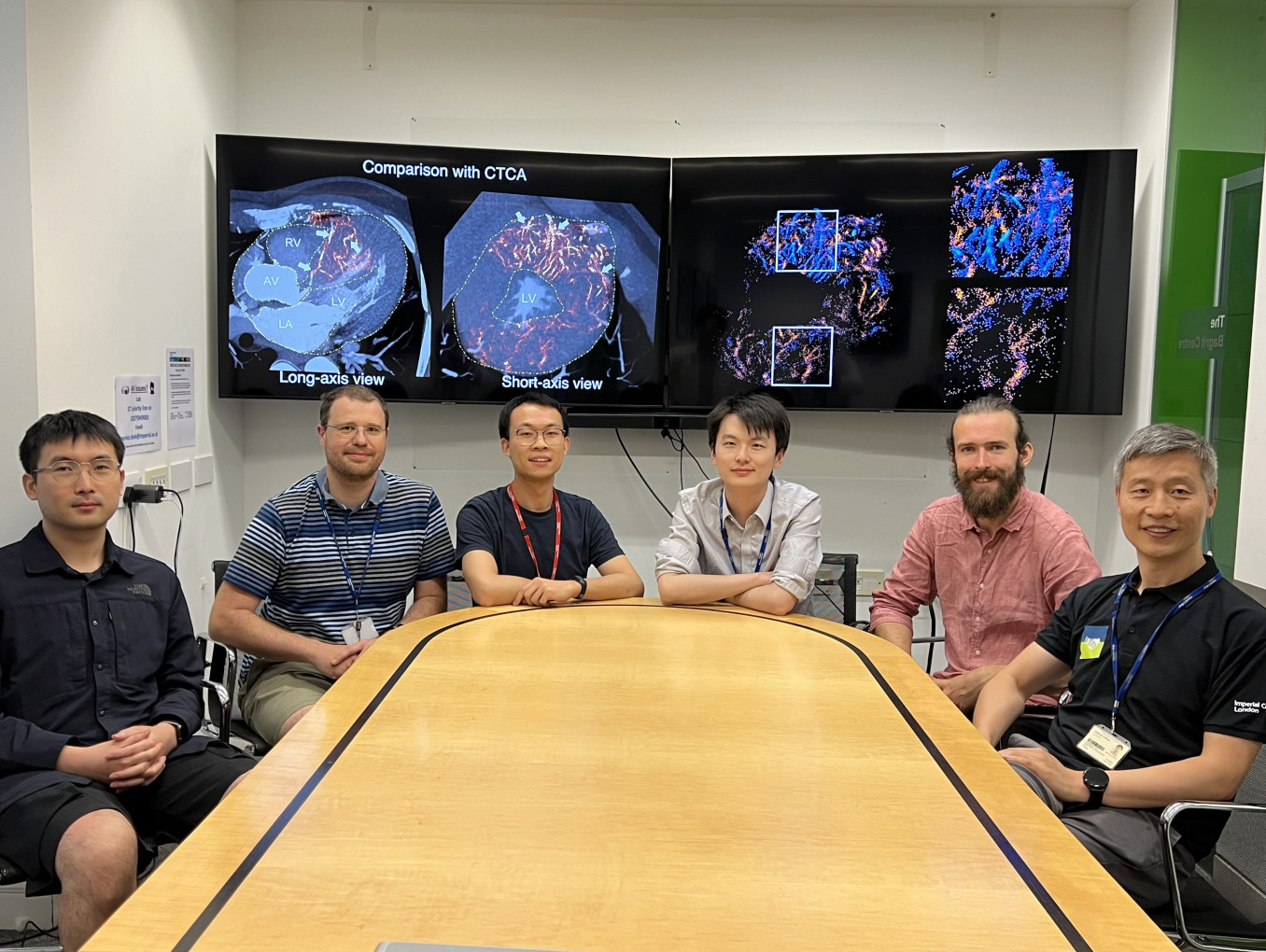Unveiling Cardiac Micro-Vessels: Mengxing Tang's Super-Resolution Imaging Innovation
Breaking the Wall of Heart Vessel Mapping
Winner Interview 2024: Life Sciences
Mengxing Tang is pioneering non-invasive, super-resolution imaging of the heart's small blood vessels. Utilizing microbubbles and ultrasound, Tang's innovative approach captures detailed images of cardiac micro-vessels and blood flow, offering new insights into cardiovascular diseases. This technology aims to enhance diagnosis and treatment of conditions like microvascular coronary disease and undiagnosed chest pains, ultimately improving cardiac health.
Which wall does your research or project break?
The small blood vessels and flow within the heart muscle are crucial to cardiac health but remain poorly understood. Diseases in these small heart vessels within the heart wall, instead of the large coronary arteries on the surface of the heart, account for ~25% of patients with suspected coronary heart disease and can lead to debilitating chest pain or even death. Existing clinical modalities can only image the large arteries on the surface of the heart. Direct imaging of the smaller blood vessels in the heart muscle has been exceedingly challenging due to their minute size and the rapid cardiac movements.
Our multi-disciplinary team of engineers and physicists, working closely with clinical scientists, have demonstrated that it is possible to image in super-resolution such small vessels non-invasively and safely in patient using microbubbles and ultrasound.
The first super-resolution images of cardiac micro-vessels and the blood flow have been produced non-invasively on human patients, through the development of a suite of ultrasound imaging and data processing technologies, building on recent breakthroughs in super-resolution and ultrafast contrast ultrasound. This can help us better understand such vessels and their role in cardiovascular diseases such as microvascular coronary disease and cardiomyopathies, as well as undiagnosed chest pains, leading to improved diagnosis and treatment.
What are the three main goals of your research or project?
Our primary goal of the project is to demonstrate that it is possible to map the very small vessels and blood flow in human hearts non-invasively in unprecedented resolution. In order to achieve this goal, we have to over a number of major hurdles. Firstly, we aimed to achieve several fold increase in ultrasound data acquisition frame rate with excellent blood flow sensitivity, through developing a customized echocardigraphy data acquisition protocol and image reconstruction approaches; Secondly, we aimed to track and correct the complex cardiac motion both within and between cardiac cycles, through develop a multi-level motion correction framework; Finally, before we demonstrate the potential of the technology in human, we aimed at optimizing the technologies in a more realistic scenario, by acquiring data on ex vivo pig's hearts.
What advice would you give to young scientists or students interested in pursuing a career in research, or to your younger self starting in science?
The first thing I would tell my younger self is the value of engaging/collaborating with other researchers, both inside and outside your field. The part of my job I enjoy the most is to discuss research with others, where many new ideas originated. Also talking to people outside your own field could bring new thinking to your field. We started our super-resolution ultrasound imaging programme, which is now an emerging new field itself, as a result of some discussion with our colleagues working in optics. Secondly, it would also be useful to develop a clear strategy. There are often many research projects/ideas you can pursue and having a long term strategy would help plan research directions and not be spread too thin between too many directions/projects. Do not be shy to consult with more experienced researchers. Finally I would say believing yourself and believing what you do, and enjoy it!


